How to Raise Ducks Without the Mess
- June 20, 2024
- 0 comment
One of the primary concerns that deter people from raising ducks is the fear of messiness. Many assume that ducks, with their love for water, inevitably create muddy, chaotic environments. However, this doesn’t have to be the case. With the right techniques and tools, raising ducks can be just as tidy as managing any other poultry.
The Problem with Kiddie Pools
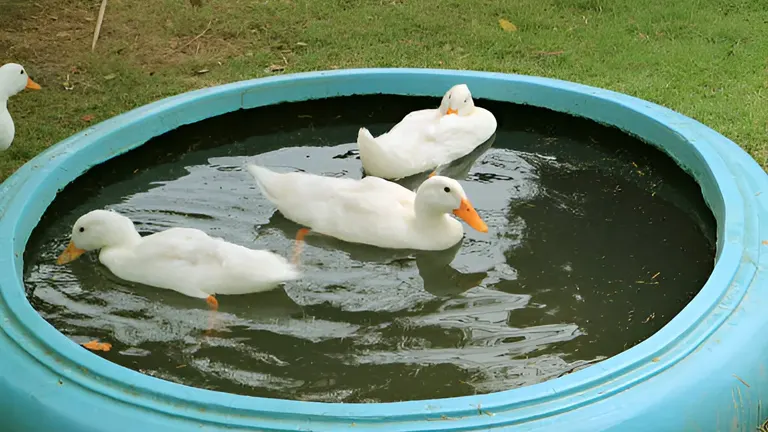
Many duck owners mistakenly allow their ducks unrestricted access to kiddie pools. It’s tempting to provide plenty of water for ducks to frolic in, but without proper management, this freedom can turn any space into a splash zone, akin to the chaos of unsupervised children playing in a pool. The splashing isn’t just limited to kiddie pools; any open water container can quickly lead to disorderly and muddy conditions.
Introducing the Duck Shield
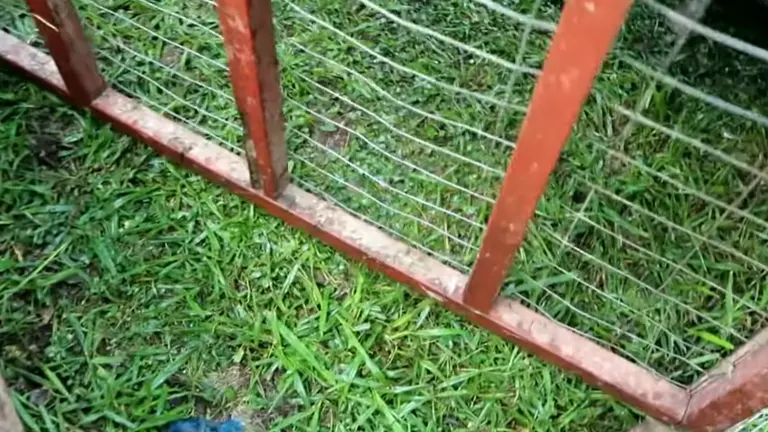
To combat this mess, I developed what I call the “duck shield.” This simple, yet effective tool encircles water sources, capturing splashes and drastically reducing the muddy conditions typically seen after duck bath time. Implementing a duck shield is straightforward and significantly streamlines duck care by keeping their bathing areas clean and controlled. This ingenious solution ensures that your ducks can enjoy the water without turning their living space into a mud pit.
Maintaining Fresh Grass and Bedding
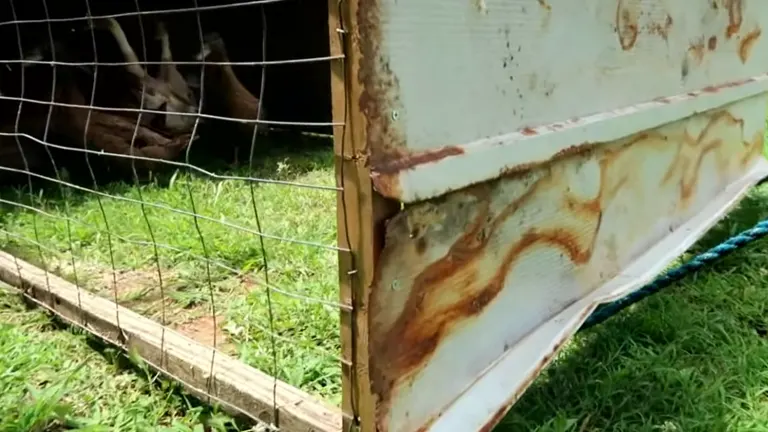
Keeping ducks’ environments clean goes beyond just managing water; it also involves ensuring they always have access to fresh grass or bedding. The innovative use of mobile duck or chicken tractors is a game-changer. These tractors can be moved daily, or even twice a day, which not only keeps the ducks in a clean area but also benefits the grass. As the ducks move, they naturally fertilize the land, which leads to healthier, more robust grass growth. This constant renewal not only promotes a cleaner living area but also enhances the environmental sustainability of your duck raising practice.
DIY Duck Shield
When it comes to preventing water messes, the duck shield is your best friend. This simple tool is designed to allow ducks access to water while preventing them from splashing around excessively. You can easily create a duck shield using scrap materials like wood, reducing costs and waste. The design should ensure that ducks can dip their heads to reach the water—vital for their health since ducks need to wet their nostrils and eyes—without their bodies entering the water. This setup significantly cuts down on the mess and keeps their living area dry.
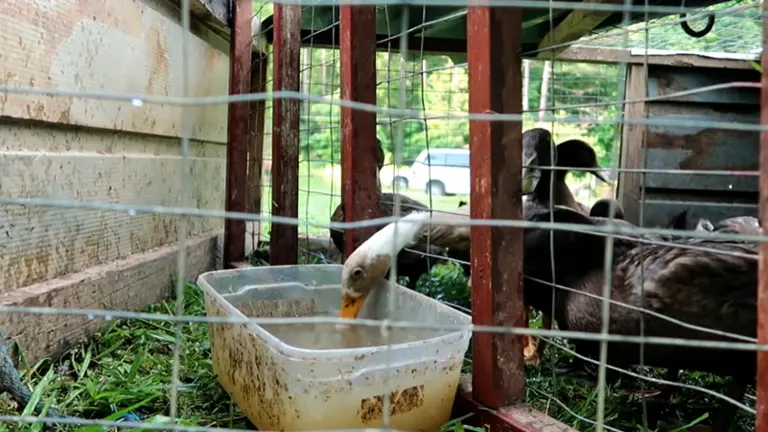
To build a duck shield, space the slats two to two and a half inches apart, ensuring ducks can access the water without the rest of their bodies following. Such measures not only maintain the cleanliness of the duck’s environment but also cater to their health needs, reducing the likelihood of crust buildup around their eyes and nostrils. It’s essential to remember that while ducks don’t need to be fully submerged daily, they do enjoy occasional full-body water access. Planning for infrequent, controlled pool time can help manage cleanliness while still allowing ducks to indulge in their natural behaviors.
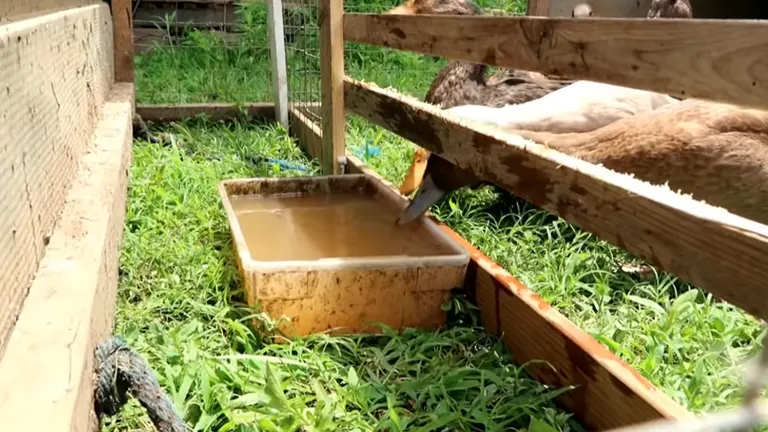
This approach not only makes day-to-day maintenance easier but also aligns with a sustainable living philosophy. Using existing resources and managing the living conditions efficiently can turn the daunting task of raising ducks into a manageable and enjoyable activity. So, grab some tools, gather some old wood, and start building your duck shield. It’s a practical, cost-effective solution that will make a significant difference in how you manage your waterfowl.
Water Access for Ducks

Ensuring proper water access is vital for duck health. Ducks need to fully submerge their heads to keep their eyes and nostrils clear of crusts. While nipple waterers might suffice for chickens, they don’t meet the needs of ducks who require a setup that allows them to dip their heads completely into the water. However, to keep their living environment clean, it’s advisable to restrict their full-body water activities—such as swimming in ponds or kiddie pools—to just a couple of times a week.
Customizing Your Duck Shield
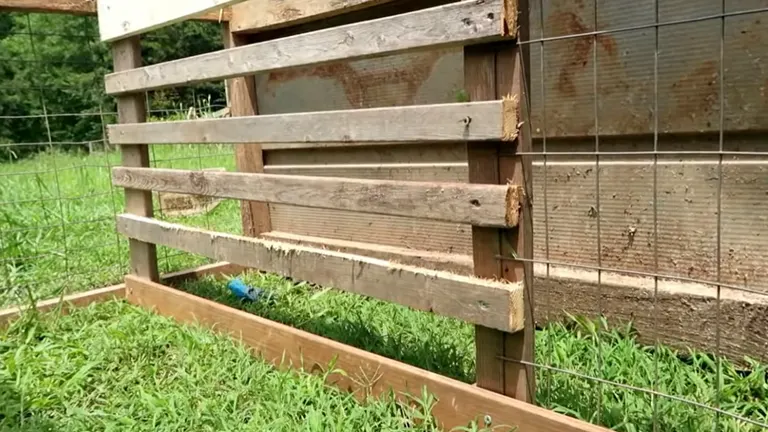
The duck shield is a flexible solution that can be adapted to your specific needs and available resources. Whether you choose to craft it from scraps of wood, pieces of lattice, or even old fencing, the key is to design it so ducks can access water without fully submerging their bodies. This method significantly reduces the mess created by splashing, keeping the surrounding area drier and cleaner. The duck shield’s design can vary from basic to elaborate, depending on your preference and the materials at hand, demonstrating that effective duck care solutions can be both functional and aesthetically pleasing.
Acknowledgments and Inspirations
I owe a nod to Jack Spirko of The Survival Podcast, whose inventive use of a chicken waterer for ducklings sparked the idea for the duck shield. It’s a testament to how adapting existing solutions to new challenges can lead to innovative breakthroughs. His approach highlights the creative potential in reimagining everyday items to meet specific needs, inspiring many to think outside the box in their animal care practices.
Conclusion
Rethinking water access for ducks and managing their living conditions can significantly debunk the myth that ducks are inherently messy. These strategies enhance the cleanliness, enjoyment, and sustainability of raising ducks. By implementing solutions like the duck shield and maintaining fresh bedding, duck keepers can enjoy a tidier, more efficient, and ultimately more rewarding experience with their waterfowl companions.
FAQs
- What do I need to start raising ducks?
To start raising ducks, you’ll need a secure and spacious area for them to roam, access to clean water, a duck coop for shelter, and proper duck feed. Setting up your space with a duck shield can also help keep your area clean by minimizing water spillage. - How can I keep the duck area clean?
Regularly changing the water and using a duck shield can significantly reduce mess. Additionally, ensure the ducks have access to fresh grass or bedding daily. Properly managing water access and maintaining the enclosure is key to a clean duck environment. - Are ducks noisy?
Ducks are generally quieter than chickens. While they do quack, their sounds are less likely to disturb neighbors, making them suitable for more residential areas. - How often should ducks have access to water for swimming?
Ducks don’t need to swim every day. Allowing them to swim once a week or a few times a month is sufficient. Frequent swimming can lead to a messier environment, so controlling access is a practical approach. - What are the benefits of using a duck shield?
A duck shield helps restrict the ducks’ ability to splash and spread water while allowing them to drink and clean their nostrils and eyes, which is essential for their health. This setup keeps their area drier and cleaner. - Can ducks be raised with other poultry?
Yes, ducks can be raised with other poultry like chickens, but they require different care, especially regarding water and space. Ensure each type of bird has its needs met in a shared environment. - What should I feed my ducks?
Ducks should be fed a diet appropriate for waterfowl, which is different from chicken feed. They also benefit from foraging for insects and vegetation, which provides natural nutrition.
We hope this guide has illuminated some practical tips and insights for keeping your ducks happy and your backyard tidy! If you’ve got any tips, experiences, or stories about raising ducks, we’d love to hear them. Share your thoughts in the comments below to help fellow duck enthusiasts learn more. Let’s keep the conversation quacking!

David Murray
Forestry AuthorI'm David Murry, a forestry equipment specialist with a focus on chainsaw operation. With over 13 years of experience, I've honed my skills in operating and maintaining a wide range of machinery, from chainsaws to log splitters. My passion for the outdoors and commitment to sustainable forestry drive my work, which emphasizes safety, efficiency, and staying updated with industry advancements. Additionally, I'm dedicated to sharing my expertise and promoting environmental awareness within the forestry community.













Leave your comment